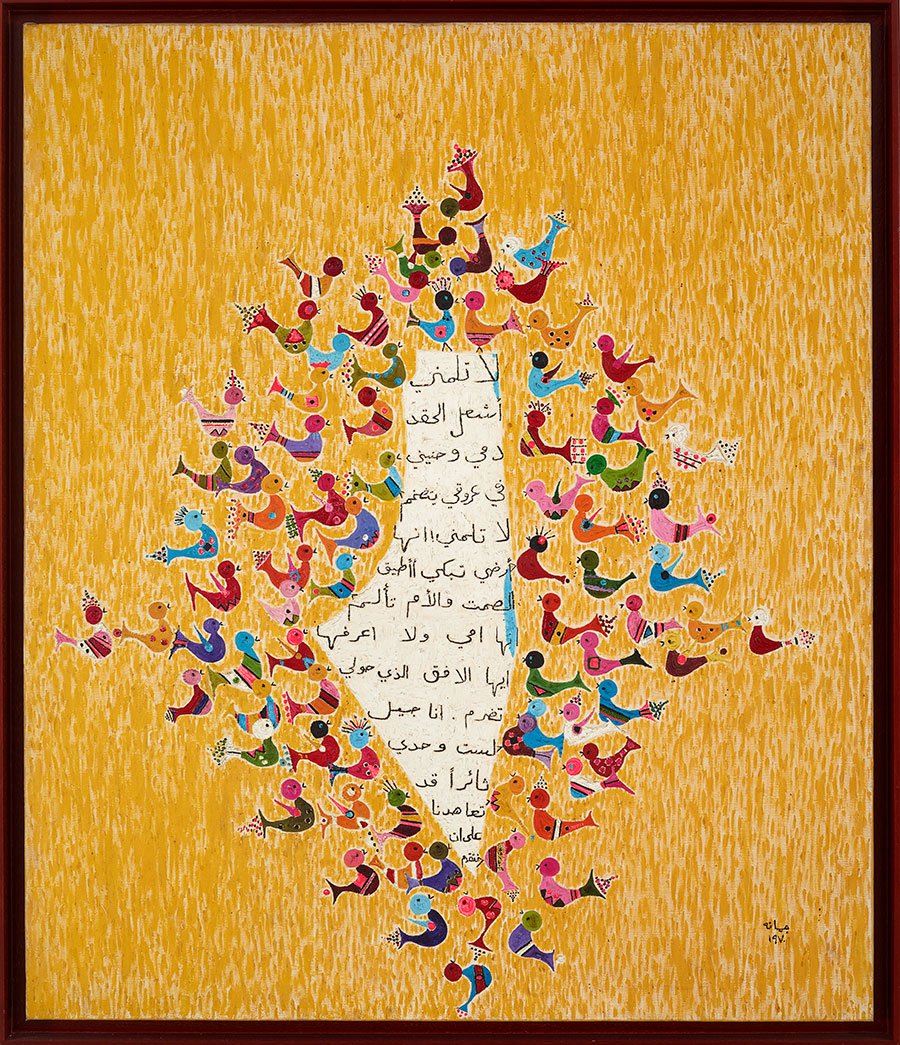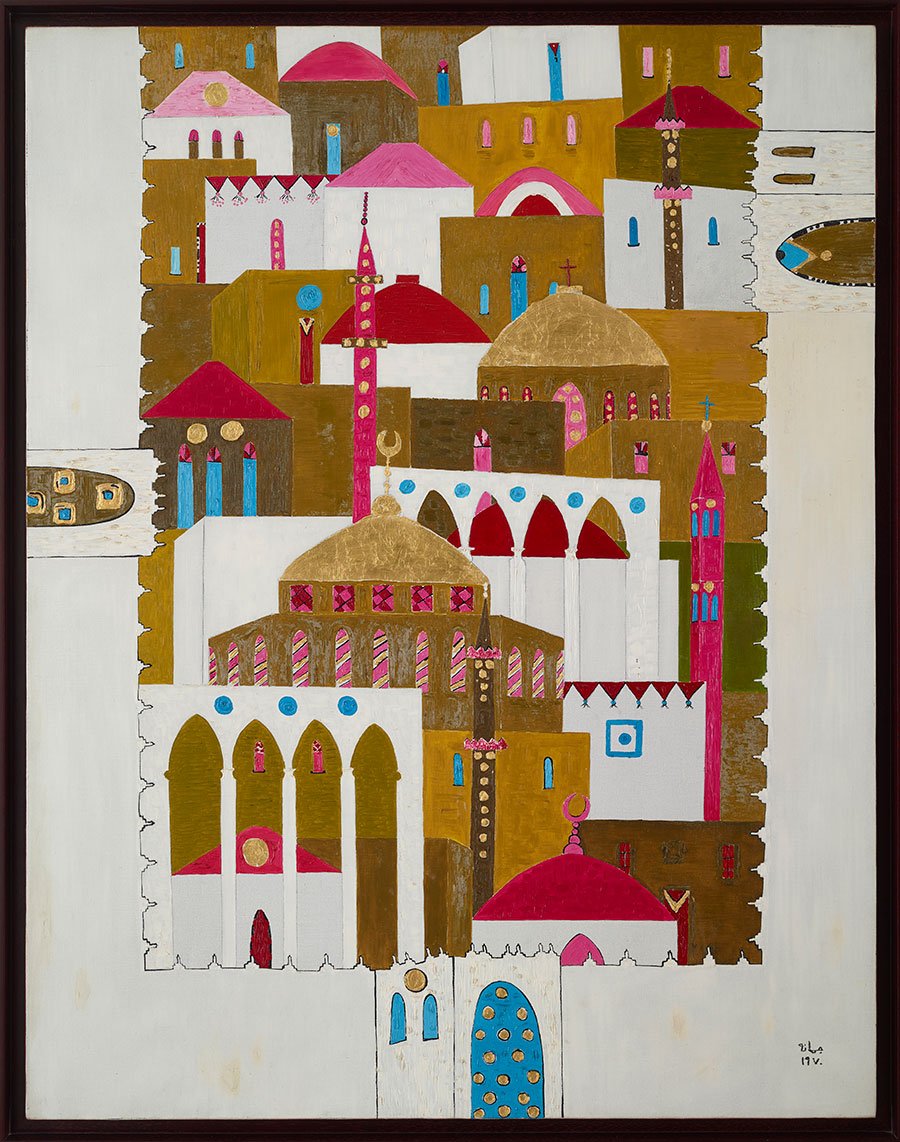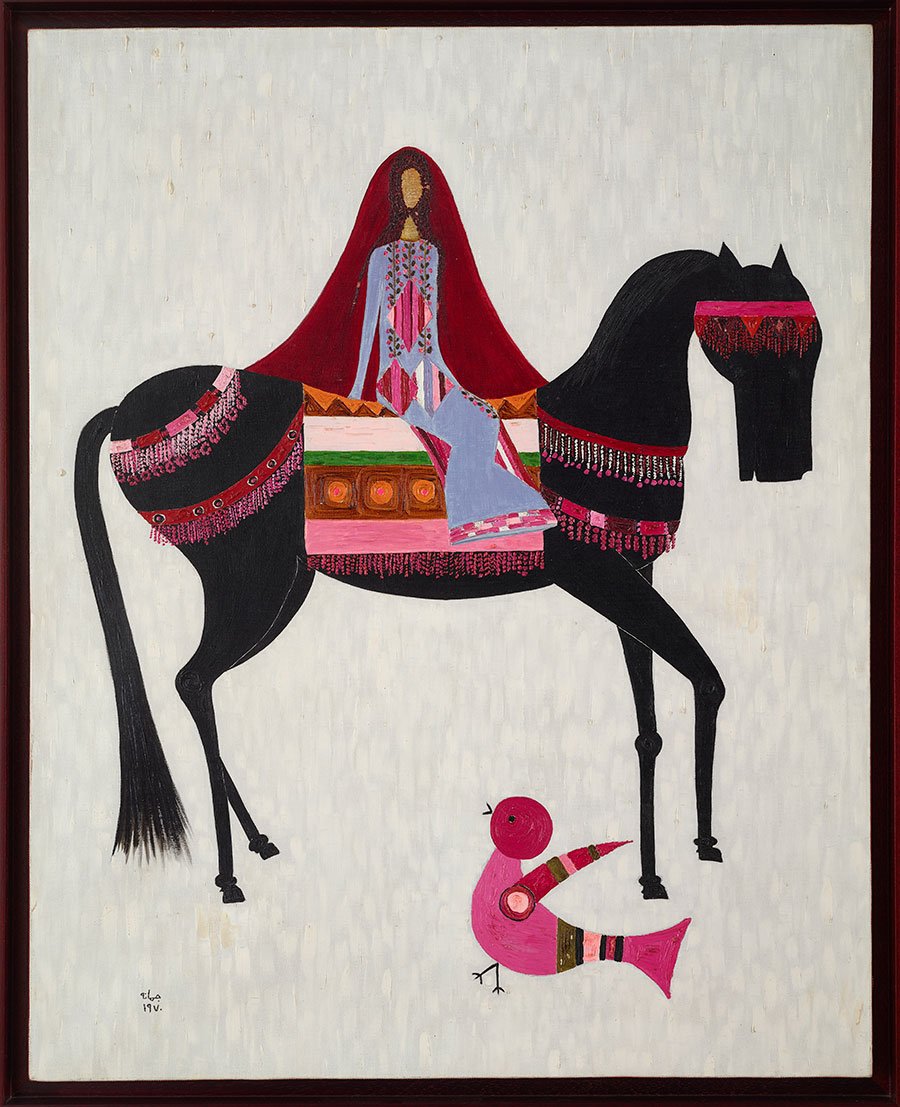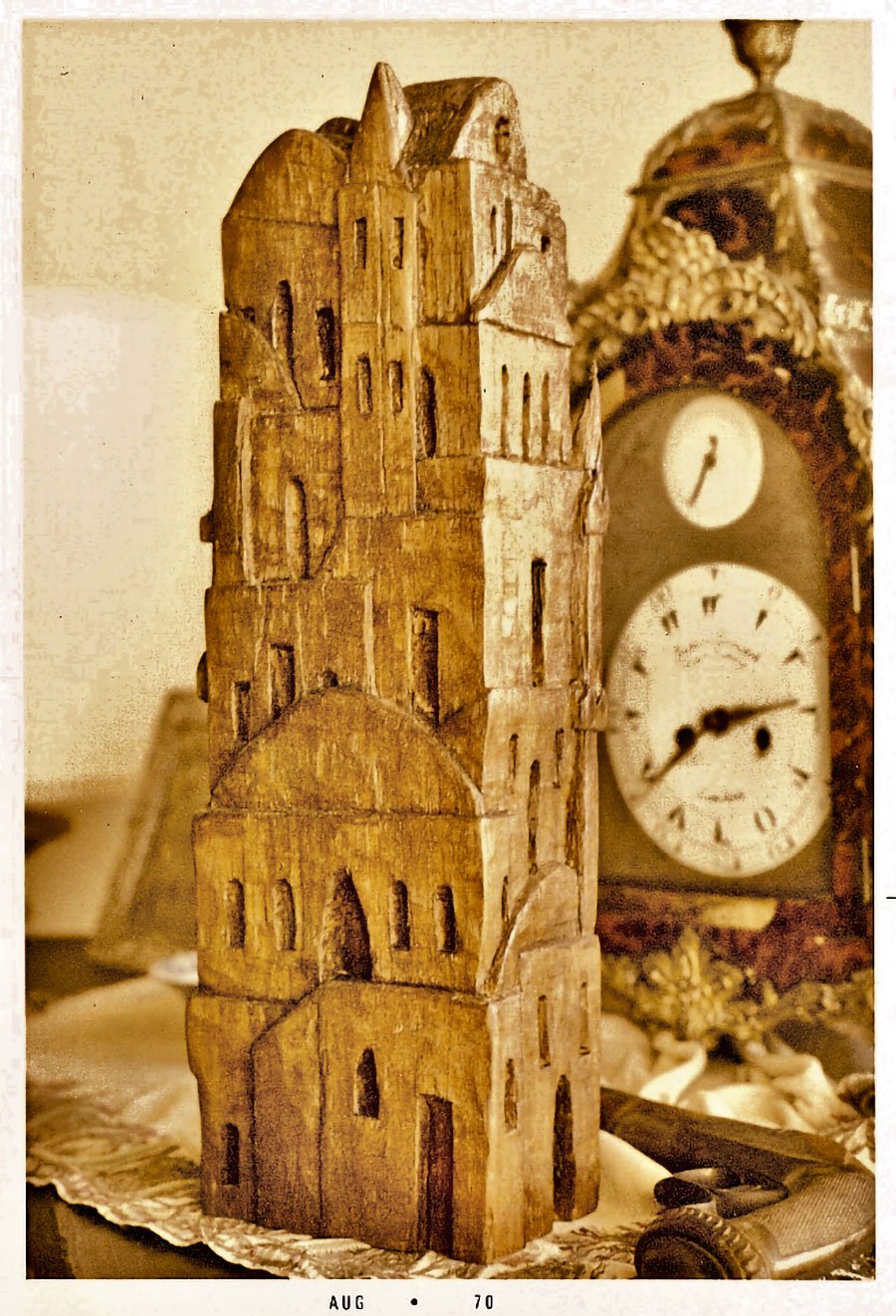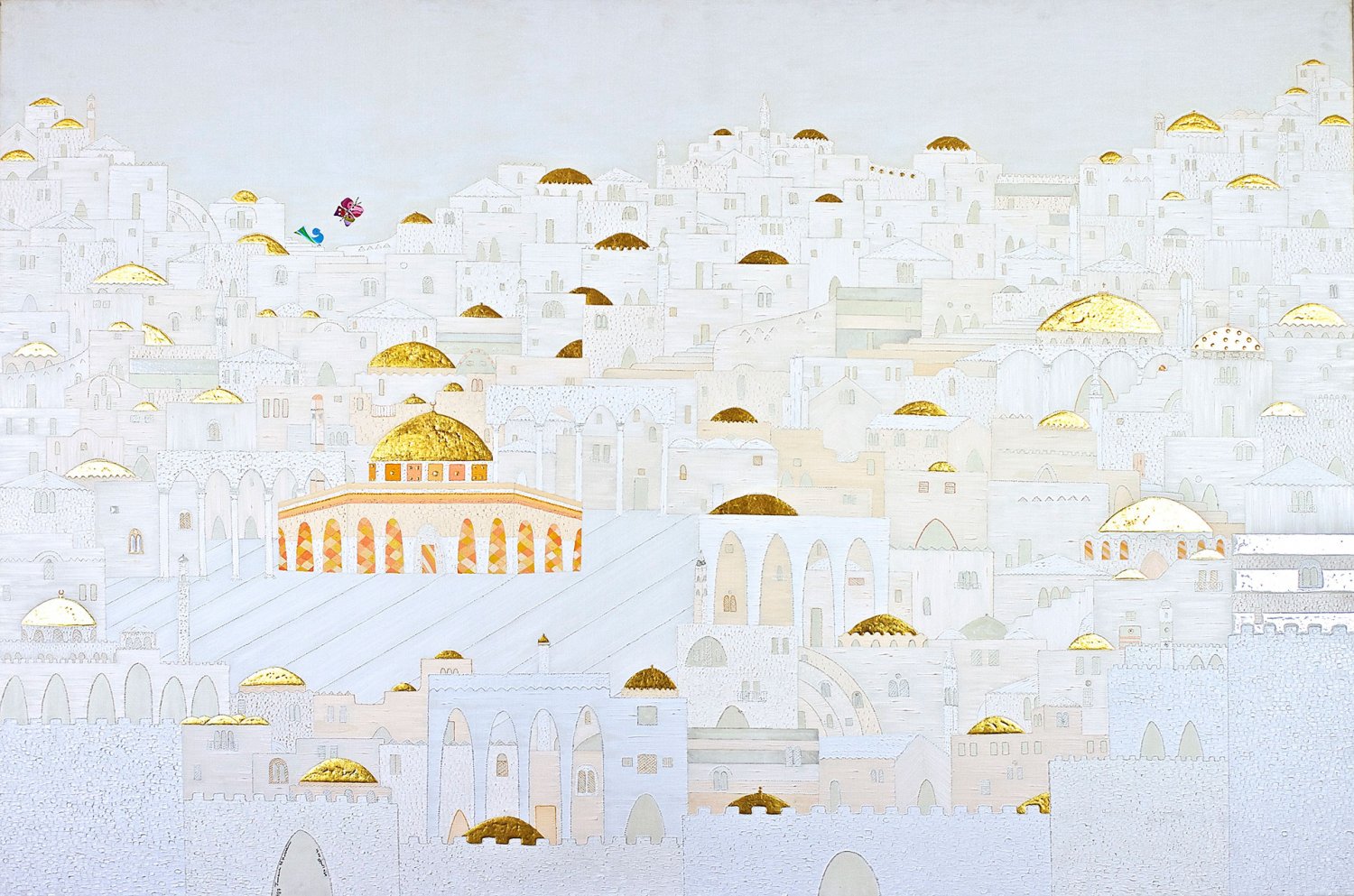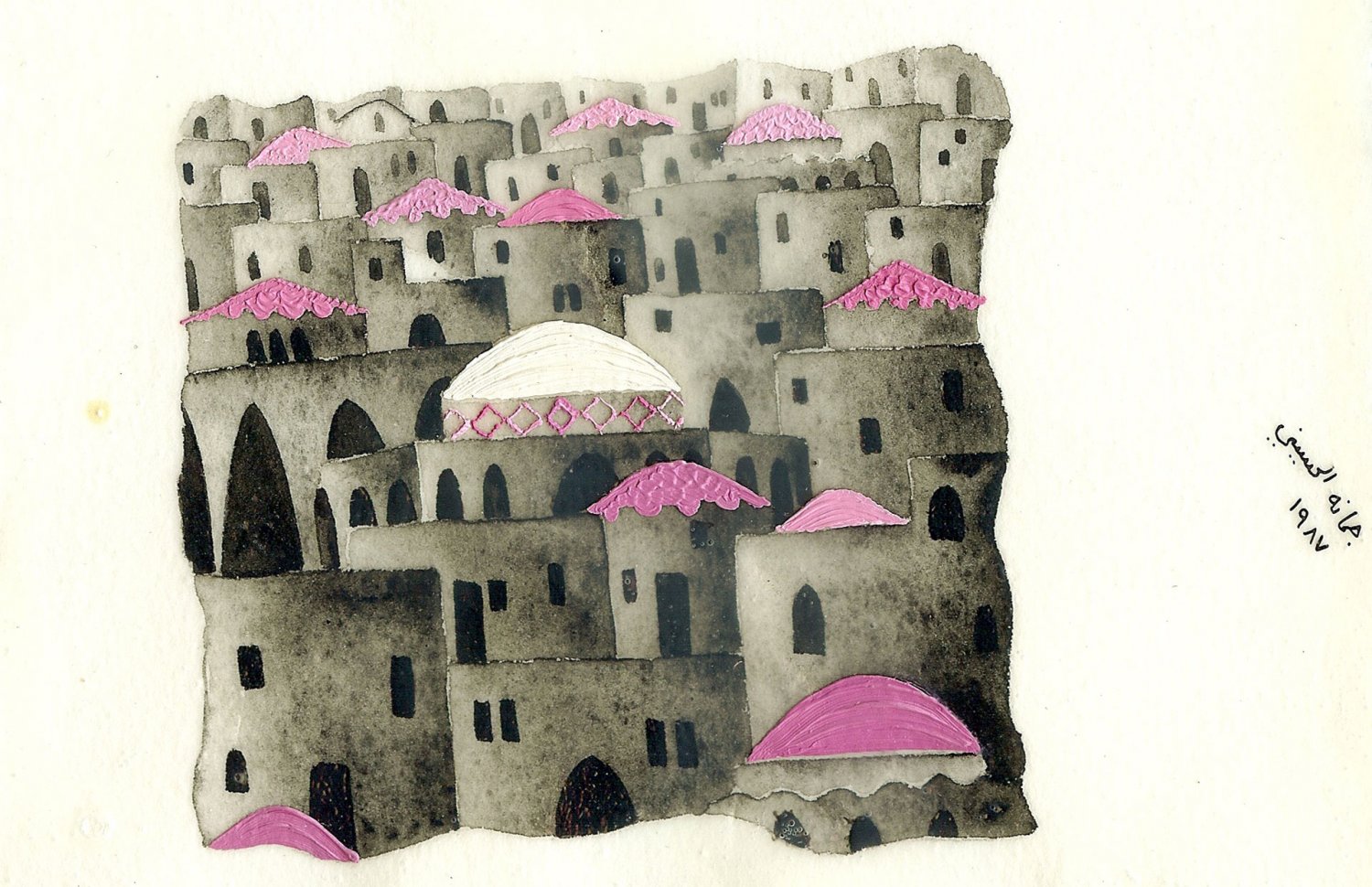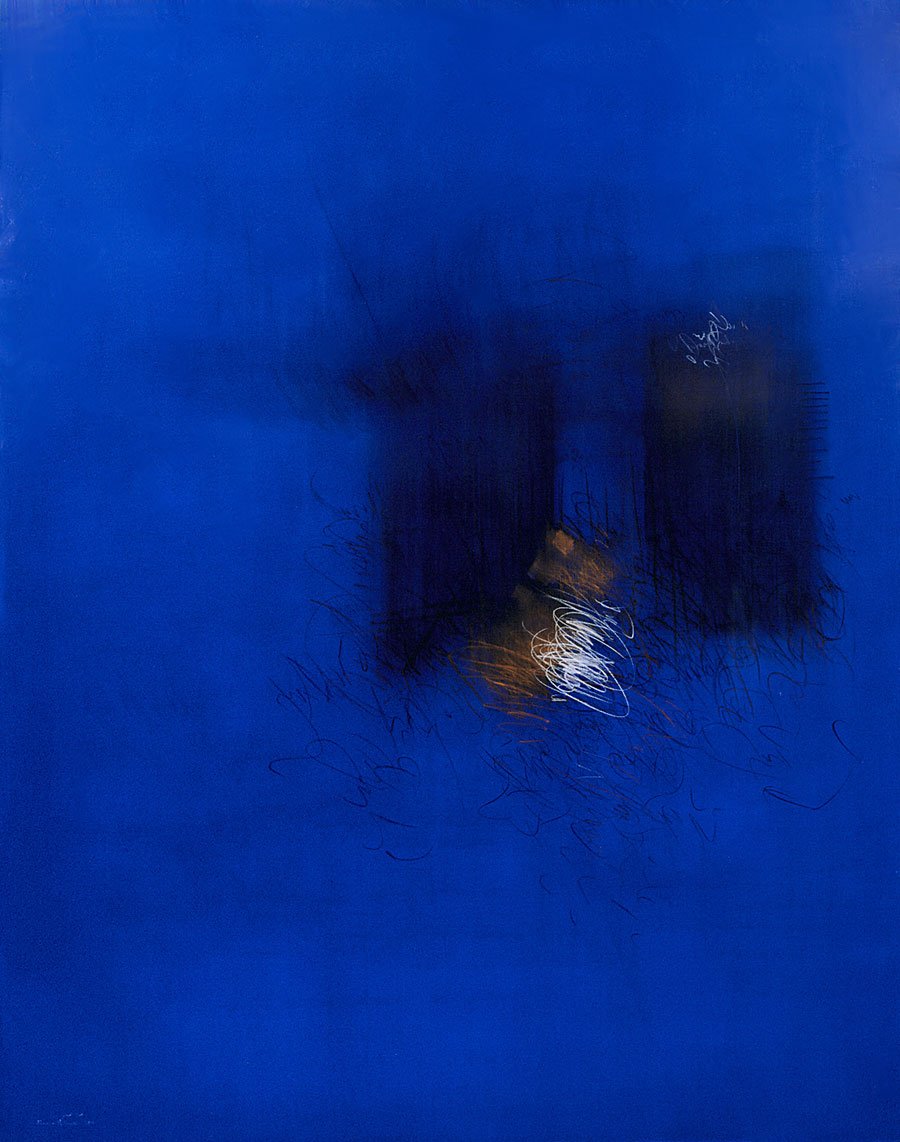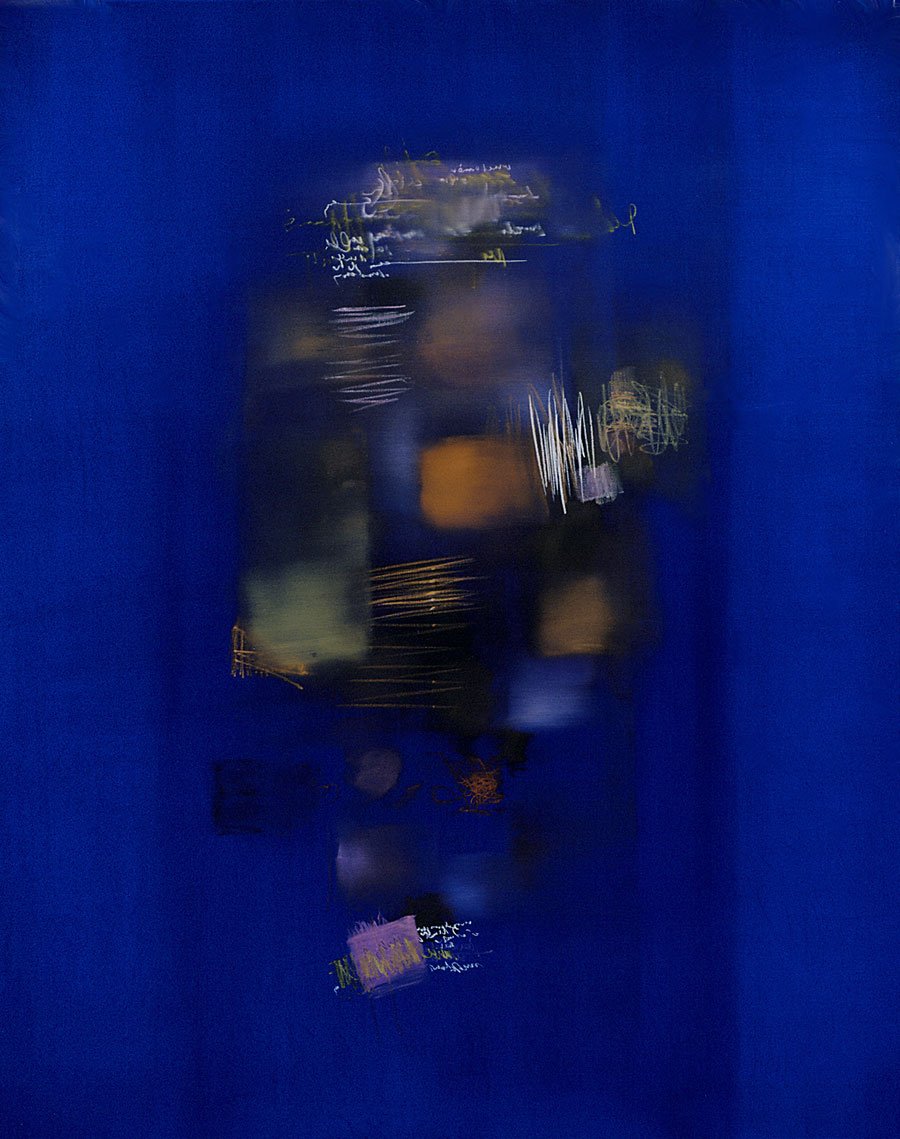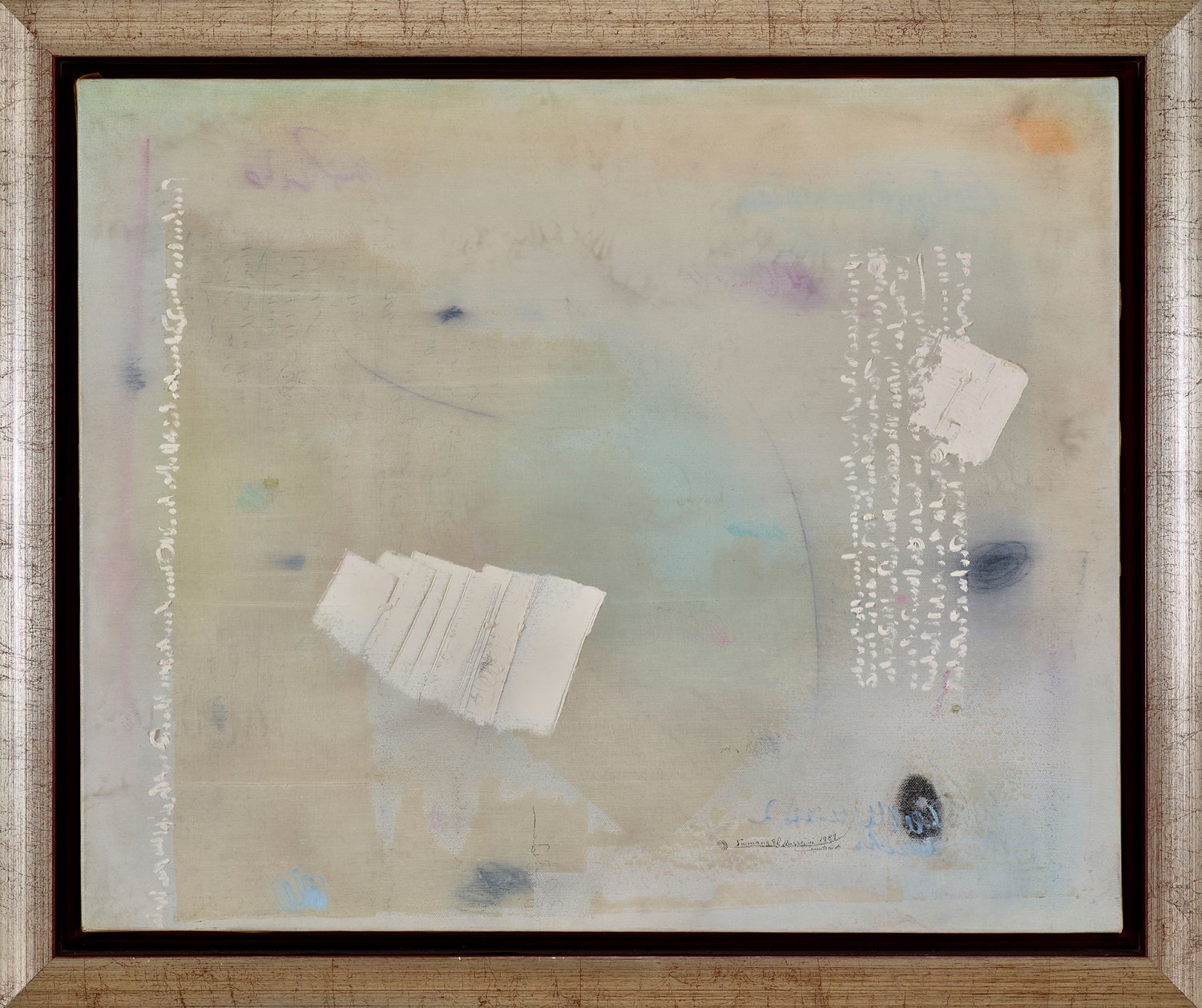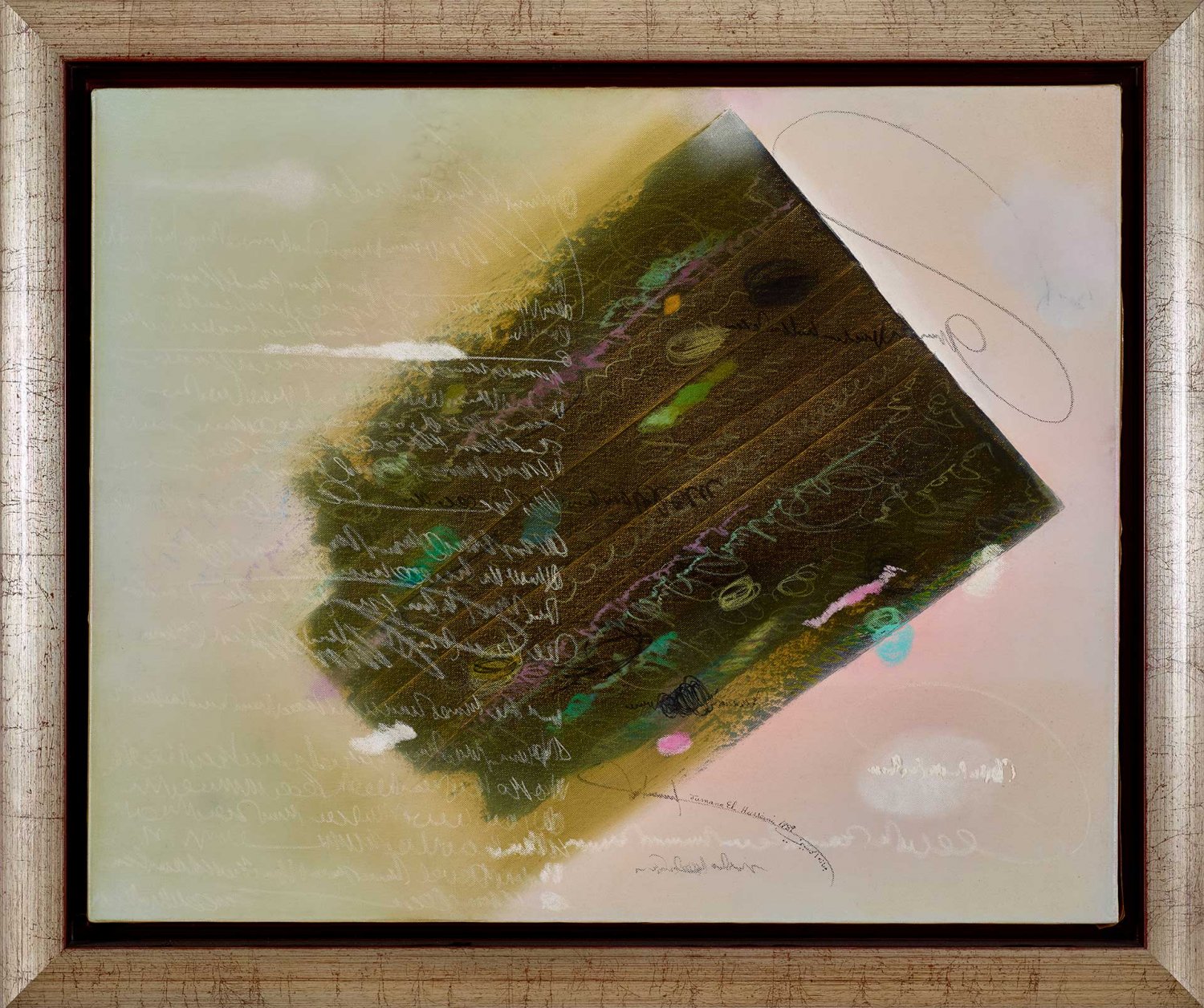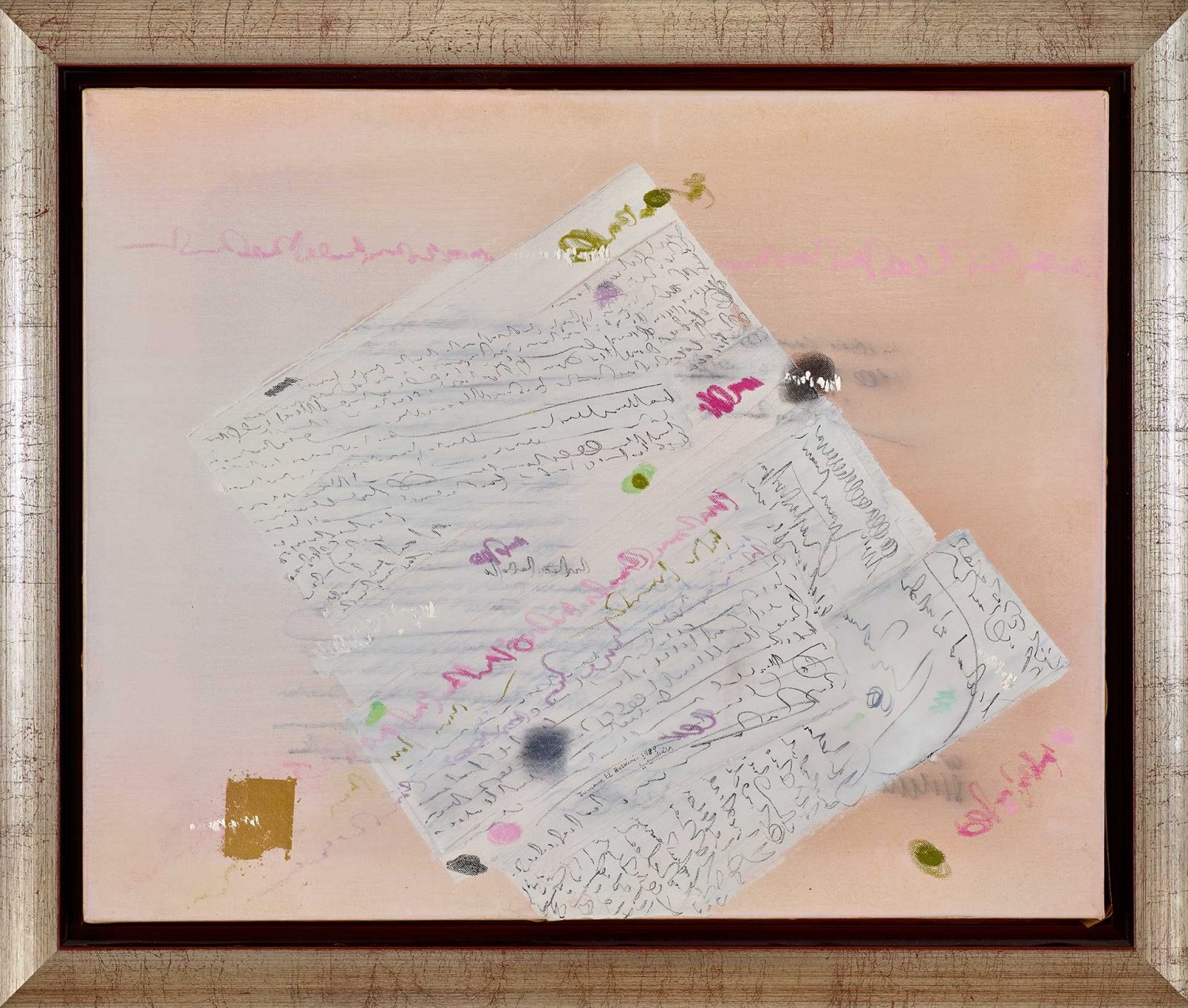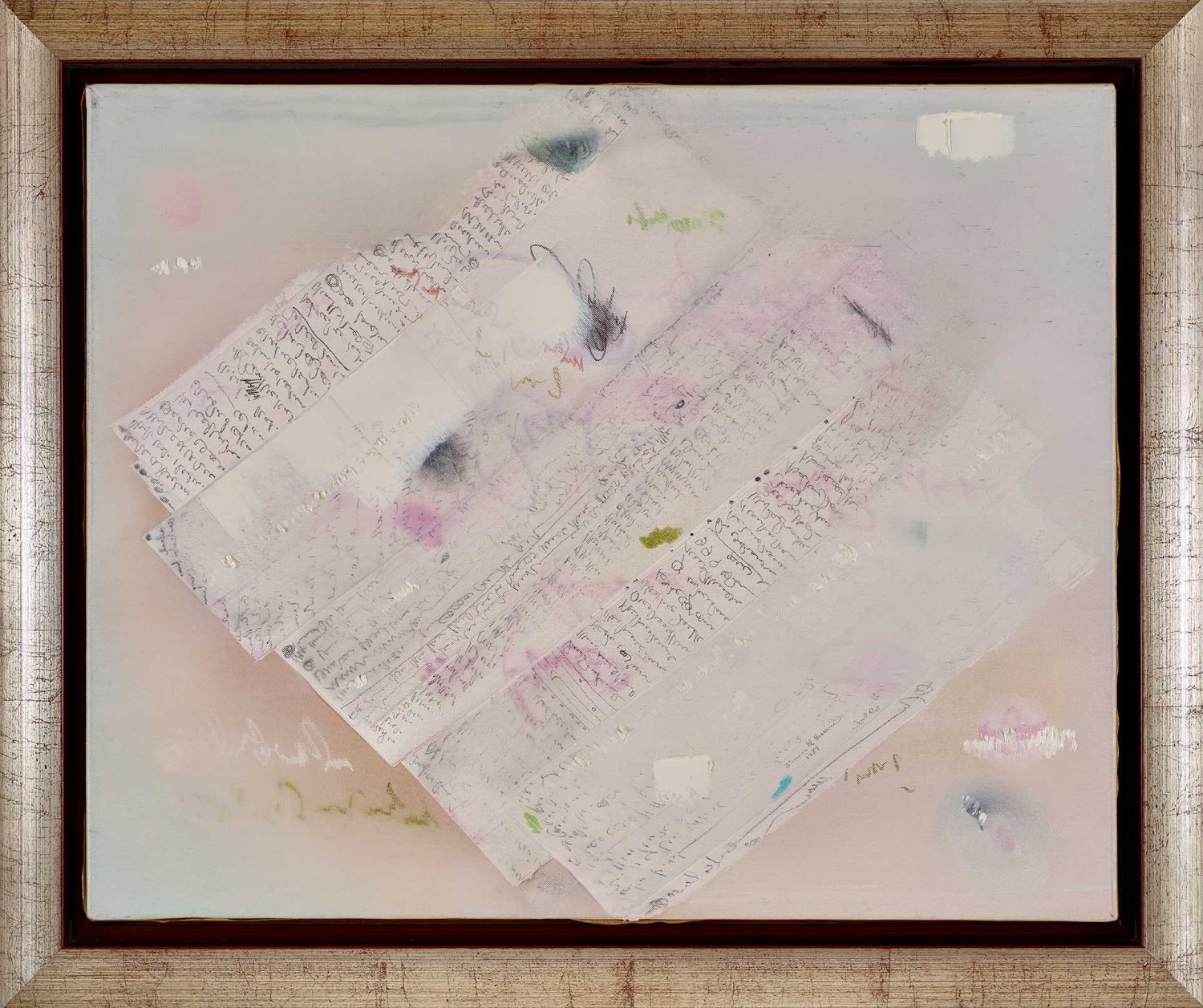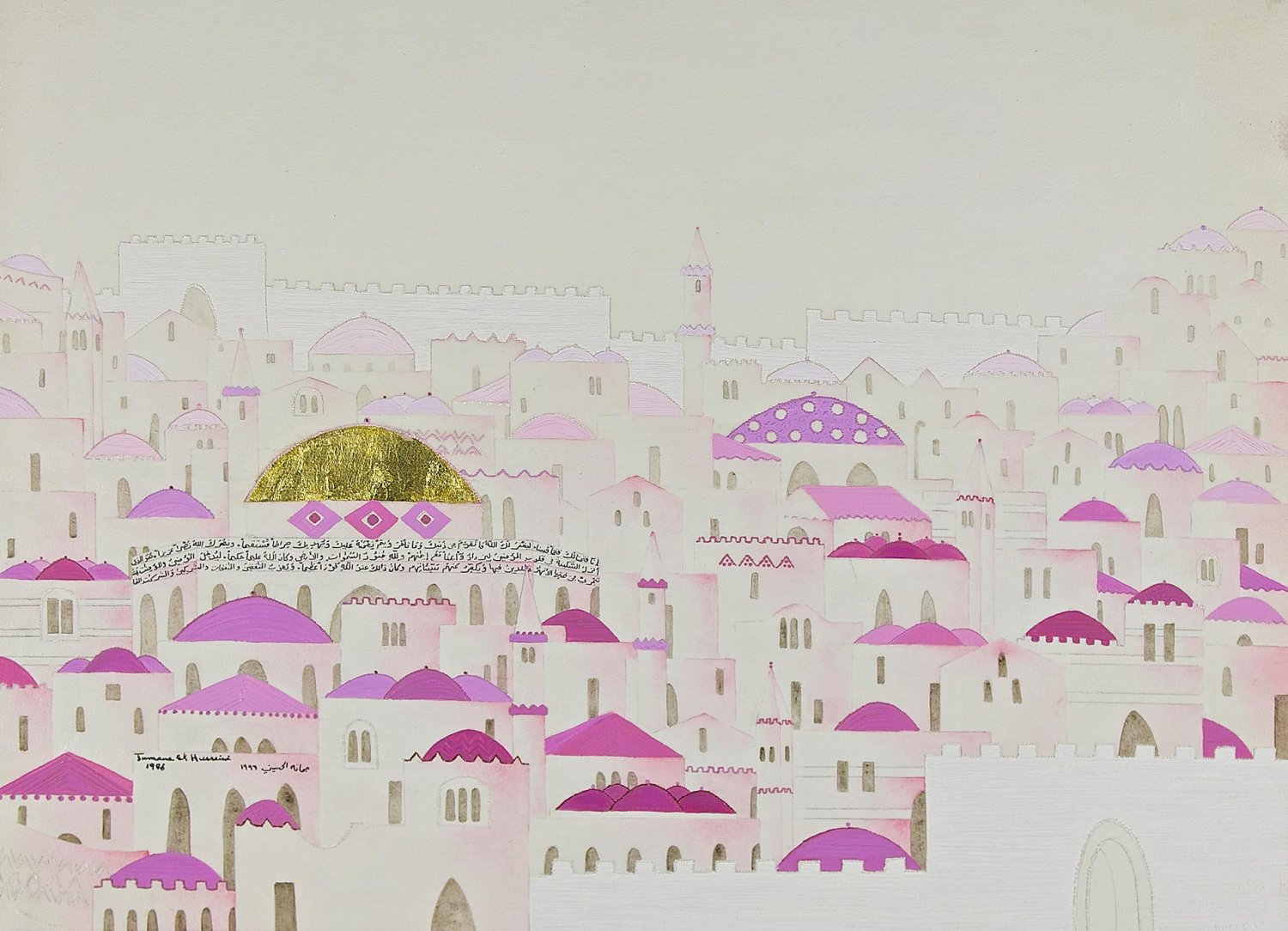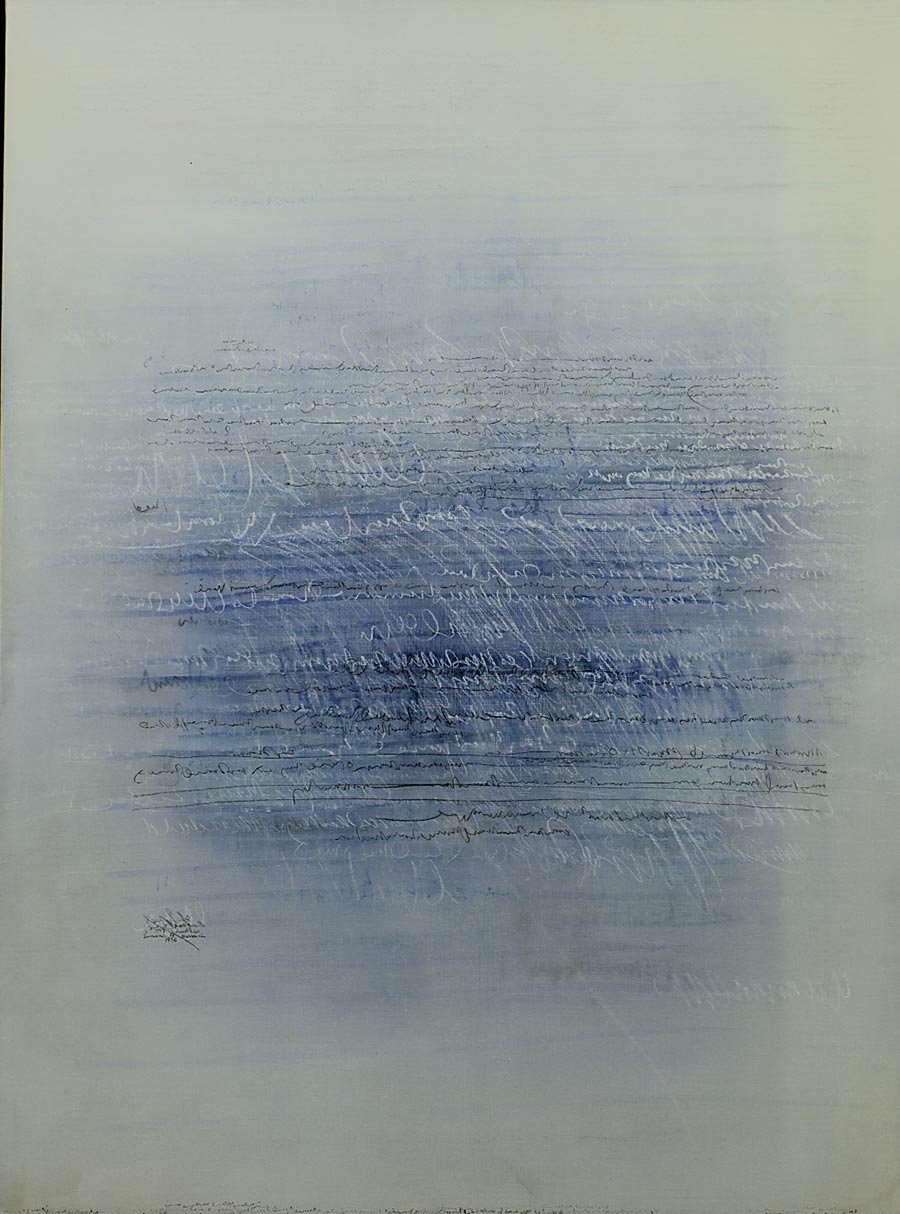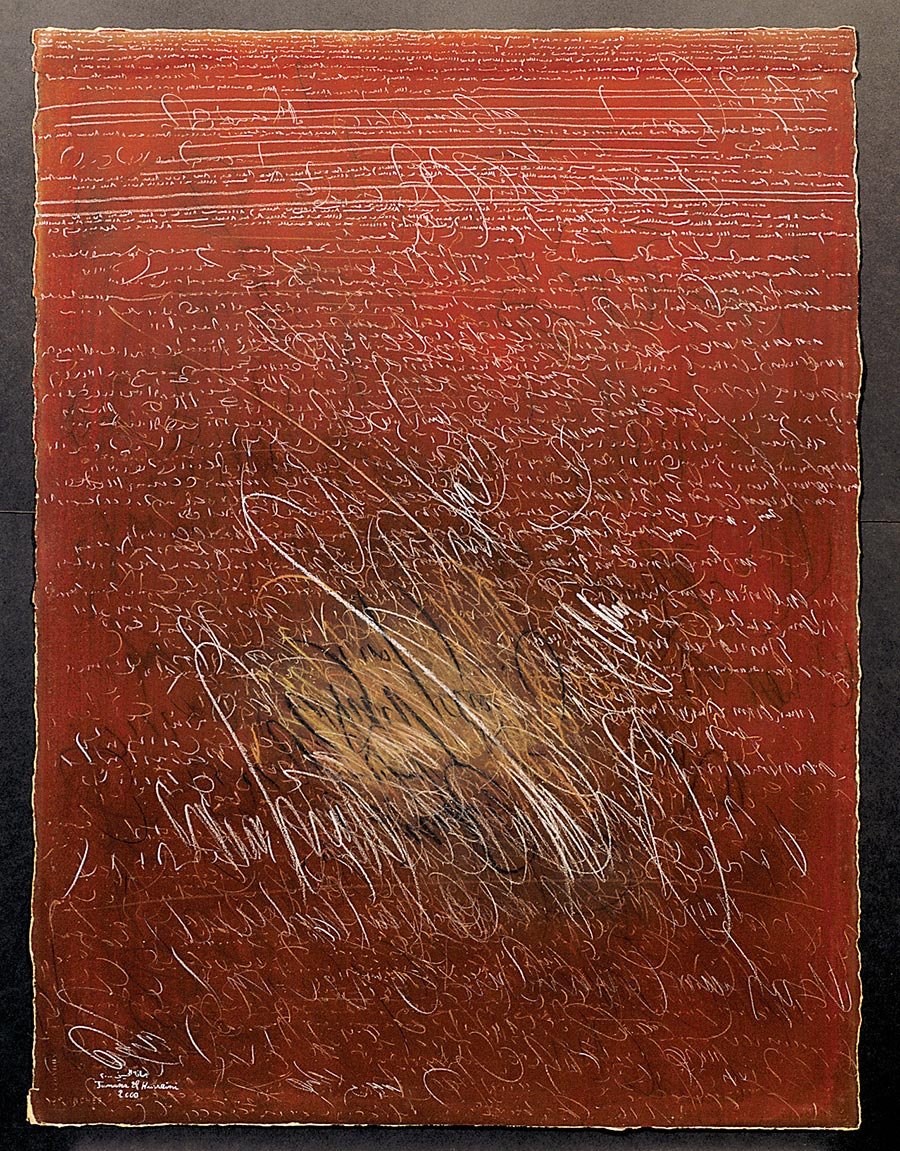Jumana El Husseini was born in Jerusalem into a family with deep roots and history in the city dating back to the 13th century. The daughter of a Palestinian statesman and granddaughter of Hajj Amin al-Husseini, who served as Grand Mufti of Jerusalem during the British Mandate and was an avid opponent of both British and Zionist colonial rule, her childhood was shaped by the political turmoil engulfing her homeland during the mandate. She and her family had no way of suspecting that by seeking refuge in a neighboring country during the violence that engulfed Palestine in the months leading up to the Nakba they were permanently forfeiting their right to live in their home or return to their homeland.
That loss would affect her art in a profound way. In her art, El Husseini recreated the Jerusalem of her childhood, experimenting with media and texture to get the effect she sought. As one biographer for the Beirut-based Ramzi and Saeda Dalloul Art Foundation observed: “From the very beginning, Palestine was her primary source of artistic inspiration, and the city of Jerusalem became a recurring theme in her work. Rather than painting the city ‘realistically,’ however, Husseini broke the stone buildings of her youth down to basic, deliberately ‘naïve’ geometric shapes, which she rendered in limited, often cheerful color palettes, occasionally accented with gold. Notably, her depictions of Jerusalem are almost always devoid of people, and their emptiness adds to the dreamlike quality endowed by her strategic use of color and negative space. With celestial and oneiric effects, the artist allows the viewer to gaze at Jerusalem as if looking through her own dreams.”1
Taking this observation further, the Egyptian artist Salah Bisar characterized El Husseini’s art this way: “The works of Jumana El-Husseini, a Jerusalem-born artist, highlight the city’s religious and heritage landmarks in the space of her paintings to such an extent that art critics said: ‘Jumana is an icon of Jerusalem. Jerusalem is an icon of Jumana.’ Her works embody and reshape the city in an aesthetic and expressive touch that surpassed reality and approached a dream-like magical world; all manifested in color formations and geometric rhythm characterized by harmony and balance.”2
El Husseini was adept at working in a variety of media: different types of paint, ceramics, sculpture, ink, and later, mixed media.
El Hussein’s style underwent changes in response to political events. When conflict in Lebanon distressed her, she turned to embroidery. When oils became difficult to secure, she turned to watercolors. During the First Intifada, her art turned abstract and dark. In later years, her art had the quality of archeological exploration, in which she uncovered layers of existence to see whether traces of the ancestors can be detected. She also inscribed a lot of Arabic language and calligraphy into her works, explaining that she was writing letters to her late mother whose grave in Jerusalem she was forbidden to visit by virtue of being exiled from her homeland.
This photo album compiles a selection of her works throughout her life in chronological order.
To learn more about Jumana El Husseini’s life, read her bio here and visit her website.


